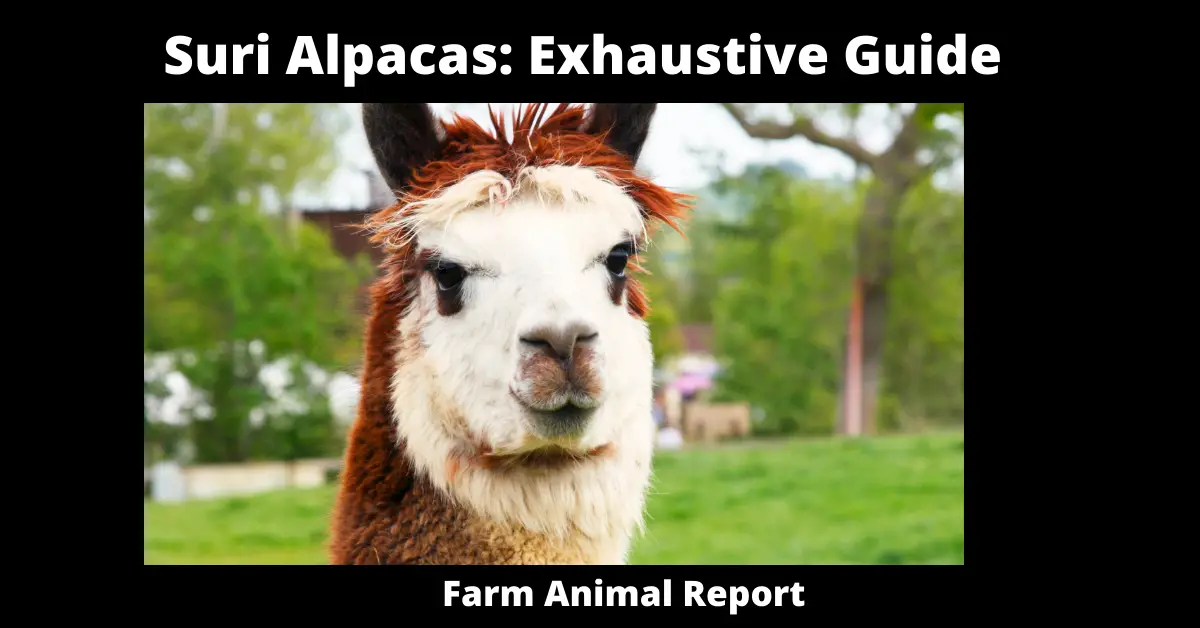As a general rule Suri alpacas, like Huacaya alpacas, are small and relatively easy to maintain livestock. They are approximately 36 inches tall and weigh between 150 and 200 pounds. Alpacas require basic shelter and protection from the elements; as livestock, they require certain vaccinations and parasite control medications. Suri are raised for their silky fiber, which resembles pencil-like locks.
Suri Alpacas: Exhaustive Guide
Suri Alpacas: Exhaustive Guide – Alpacas originated in South America, where they were bred for thousands of years by the Incas. Several alpacas were imported to the United States from Bolivia, Chile, and Peru in the early to mid-1980s. Alpacas are modified ruminants that are related to llamas and camels. While their diminutive stature and curious faces give them a high cuteness factor, their huggability is debatable. After all, these are livestock. While the occasional alpaca may enjoy a hug, they are generally content to mingle with their own.
Check Out Amazon’s Educational Resources for Raising Alpacas
Suri alpacas are typically raised for their silky fiber, which resembles pencil-like locks. As with the Huacaya alpaca, the Suri alpaca is prized for its dense, soft fleece, dubbed “The Fiber of the Gods,” for centuries. Alpaca fiber is prized for its quality, versatility, and rarity; it ranks alongside wool, cashmere, and mohair as the most exclusive fibers in the fashion world.
Alpaca fibers range in thickness and chunkiness from sheer in the finest silks to thick and chunky tweeds and wool. It dyes easily, produces the coziest batting and softest felt, spins beautifully, and can be combined with other fibers to create various textures and beauty. Additionally, individuals raise alpacas for companionship and to experience a rural lifestyle.
Suri alpacas, like Huacaya alpacas, are small and relatively easy to maintain livestock. They are approximately 36 inches tall and weigh between 150 and 200 pounds. Alpacas require basic shelter and protection from the elements; as livestock, they require certain vaccinations and parasite control medications.
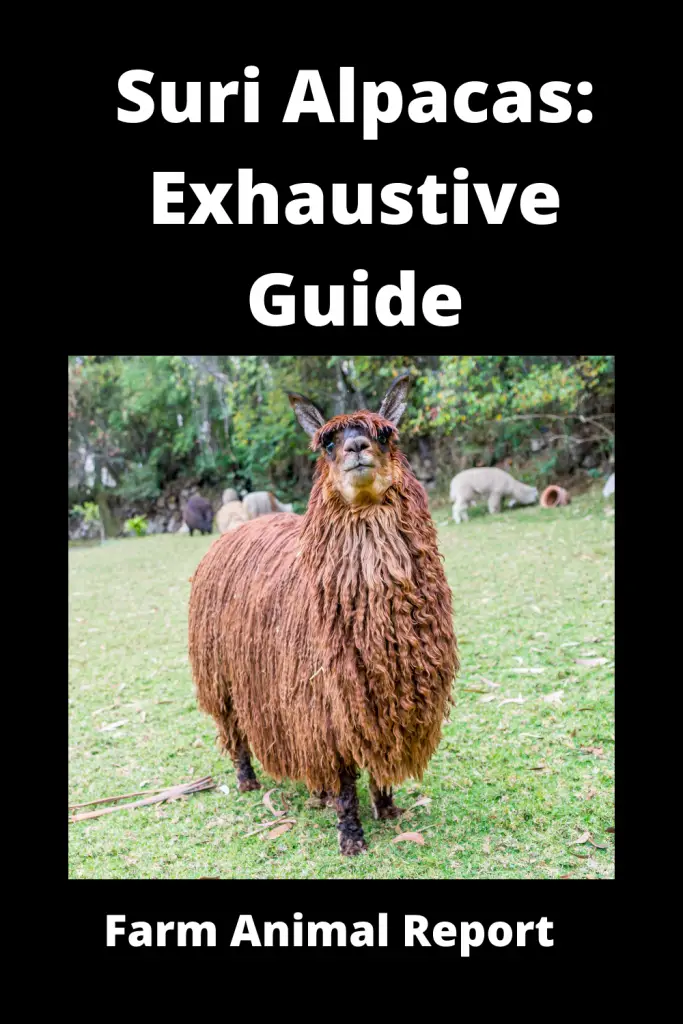
They lack horns, hooves, and claws, as well as incisors and upper teeth; they exist on grass and cud. Alpacas do not have hooves; instead, they have two toes with hard toenails on the top and a soft pad on the bottom, similar to a dog’s foot. As a result, you do not experience the same level of soil compaction as you would with other types of livestock.
How much Does a Suri Alpaca Cost?
Alpacas number approximately 4.5 million worldwide and 150,000 in the United States. Suris account for only 120,000 of all alpacas, with 26,500 living in the United States. Female pure Suris are generally priced between $10,000 and $30,000. Raw Suri fleece sells for between $30 and $80 per pound, with the highest premium paid for the alpaca’s first shearing’s prime or blanket fleece (known as a cria, tui, or baby alpaca fleece). A typical Suri produces between 4 and 8 pounds of usable fleece per year. When sorted into different grades, almost all of the shorn Suri fleece can be used to make products – there is very little waste.
18 ways Alpaca Farmers make Money
What is the difference between Huacaya and Suri alpacas?
Alpacas are classified into two breeds: Suri and Huacaya. The characteristics of their fleeces only distinguish them. Discover the distinctions between Suri and Huacaya fleeces!
Suri alpacas are extremely rare, and their fleeces have a lock structure that hangs down over their bodies. Huacayas have crimpy springy fiber that grows out and imparts a fluffy appearance. When Suri and Huacaya fibers are compared, Suri fiber performs well in woven products, while Huacaya fiber performs well in knit products. Both fibers have a wide range of applications in both types of products.
Suri alpaca fiber is more similar to Angora goat mohair, whereas Huacaya alpaca fiber is more similar to sheep’s wool. Suri fiber is lustrous, and Huacayas are bright. To learn more, it’s most interesting to compare raw fleeces and roving from both of these fibers. There are variations within the breed, so be sure to examine various fleeces to appreciate how excellent alpaca fiber is.
What is Suri alpaca yarn?
Suri has a superior handle to other fibers due to the longer and tighter profile of the scales along the fiber shaft, which results in a very smooth surface. Suri also has a negligible amount of medullation (coarse, hollow fibers that cause prickling and do not process or dye and standard fibers).
Suri alpaca fiber is coveted for its luster and softness by the high fashion textile industry and commands a price double that of Huacaya on the global market. Suri is as soft as cashmere, as lustrous as silk, warm and featherweight as goose down, and as durable as wool. Suri fiber knits crochet and weaves skillfully with wool and other fine fibers, including silk. Suri fiber is used in a variety of applications:
- Fabric designed for men’s and women’s designer clothing
- Luxury clothing, coats, sweaters, and one-of-a-kind decorator items
- Interior fabrics and textiles with a twist
Suri is most frequently used in overcoats that are brushed to bring out the natural luster. In Australia, some enterprising and highly skilled breeders in Queensland are hands spinning Suri fleece to create lacework shawls and even wedding gowns. When the fashion industry places a high premium on Suri, orders become challenging to fill, and the price rapidly increases.
The majority of the product is sold to Italy, going to the United States, Europe, and Japan. Suri fleece may have a higher density and yield than Huacaya fleece, according to research. Suri fiber yields 90% when processed, compared to 43-76 percent for sheep’s wool. Suri Fiber’s unique properties include the following:
- Suri fibers with a diameter of 30-35 microns can have the same soft handle as 16.5-micron cashmere. Human hair, by comparison, is between 40 and 120 microns in diameter. (1 micron is equal to one-millionth of a meter!) A sheet of standard copy paper, for example, is 100 microns thick.
- The soft handle results from the flat, fine scales on the fiber surface, which reflect light brilliantly. The flat, thin scales eliminate the “prickle factor” associated with wool clothing.
- The longer fibers of the Suri prevent pilling in clothing items (which occurs in cashmere, camel, and vicuna clothing).
- Suri possesses an unusually high tensile strength and is especially useful as the “warp” in woven goods.
- Suri fiber is most similar to kid mohair in terms of slickness, which can result in processing “slip.” This can be overcome by humidifying the area where the fibers are processed.
- Suri fiber is best used in worsted processes because it best exhibits its luster. It is one of the softest and most luxurious napped fabrics available.
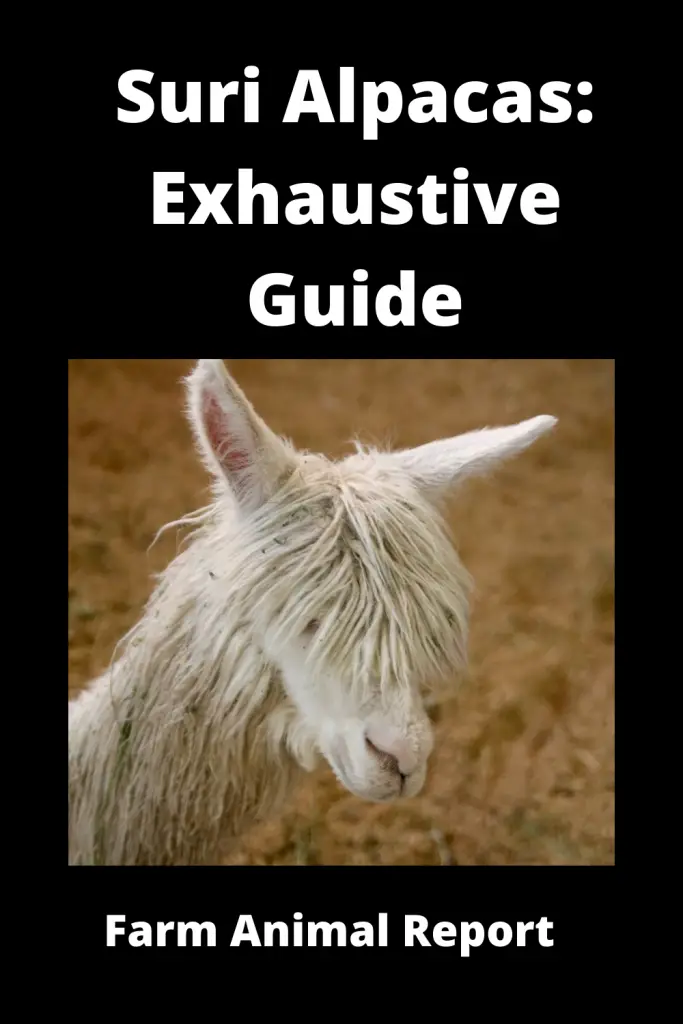
How often do you Shear Suri Alpacas?
Shearing alpacas is comparable to getting a haircut. Alpacas are typically shorn once a year, in the spring. Shearing is the most time-consuming maintenance aspect and usually takes between five and ten minutes per animal for an experienced alpaca shearer. If this is your first time purchasing alpacas, inquire about a recommended shearer or whether you can bring the alpacas back to the property on their shearing day.
While some alpacas are shorn standing up, the preferred method of shearing is to lay the animals on their side and restrain their legs with a rope at each end. This safeguards both the shearer and the alpaca against accidental injury. After shortening one side of the animal, it is rolled over and shorn on the opposite side. Alpacas cut between 3 and 10 pounds of fleece per year, depending on the density of the fleece. Some of the superior stud males will shed additional pounds.
What is Suri Alpaca Wool?
A Suri’s fleece is draped from its frame in long, lustrous, silky locks. Suri fibers are long and straight in appearance and twist together as they grow away from the skin. Suri alpacas have a range of natural colors in their fleeces, which appeals to those who prefer only genuine products. The Alpaca Owners Association recognizes sixteen official colors. They are available in white, beige, three shades of fawn, three shades of brown, bay black, true black, and six shades of grey, as well as a variety of other subtle shades and hues.
Additionally, some alpacas can be multicolored to add to the variety! Suri fleece dyes beautifully, providing the fiber artist with an infinite color palette. Suri fleece can also be blended with other fine fibers before spinning, including fine wool, cashmere, mohair, silk, Tencel, bamboo, and angora to create incredible natural blends.
Compared to sheep’s wool, alpaca fleece is generally stronger, lighter, warmer, and more resilient. More acceptable grades of alpaca fleece (commercially referred to as “Baby Alpaca”) are believed to be hypoallergenic, meaning they do not irritate the skin in the same way that sheep’s wool occasionally does. Unlike sheep’s wool, Suri fleece is lanolin-free and thus ready to spin after minimal cleaning. Suri fleece is highly sought after for its unique silky feel and superior “handle” by cottage-industry artists (hand spinners, knitters, weavers, etc.) and the commercial fashion industry.
Is Suri Alpaca warm?
Suri alpacas, which are extremely rare, do not have crimped fiber. Their fiber is straight and hangs in silky tendrils or locks from their bodies. It is comparable to silk in terms of its silky handle and lustrous appearance. Suri alpaca fiber spun into fabric or yarn has a lovely, soft drape that moves with the wearer. A Suri alpaca’s fiber flowing like a silken curtain in the breeze is a sight to behold.
Although alpaca produces wonderful warm, soft garments, it is not exclusively used in warm weather! It can be used to create lightweight garments that can be worn all year. A light summer shoulder wrap may be the perfect item to add a touch of elegance to those cooler summer nights out.
How do you process Suri Alpaca Fiber?
Hand spinning is the oldest and most traditional method of converting alpaca fiber to yarn. Alpaca is a highly desirable fiber for hand spinners because, unlike sheep’s wool, it is a dry fiber with trace amounts of lanolin that can be spun directly from the fleece without scouring. Numerous individuals sell individual fleeces in a variety of colors to hand spinners. Some will sell carded (or combed) fleece, while others will sell washed and carded fleece in quantities as small as 50-500g. The average unsorted alpaca fleece weighs approximately 2.5kg and provides enough fine fiber to keep a hand spinner busy for an extended period.
Is alpaca Hypoallergenic?
The alpaca fiber contains a minimal amount of lanolin, which is eliminated during the production process. This means that alpaca wool is hypoallergenic. People with a wool allergy can wear alpaca wool without suffering an allergic reaction.
Cameron Holt asserts that claims that alpacas do not produce lanolin are untrue. He argues that all wool-producing animals, including alpaca, have lanolin. Lanolin aids in the growth of hair by allowing it to penetrate the skin. Additionally, it assists the animal in surviving in its harsh environment.
HOWEVER, because alpacas produce significantly less lanolin than other wool-producing animals, almost all lanolin is removed during the production process.
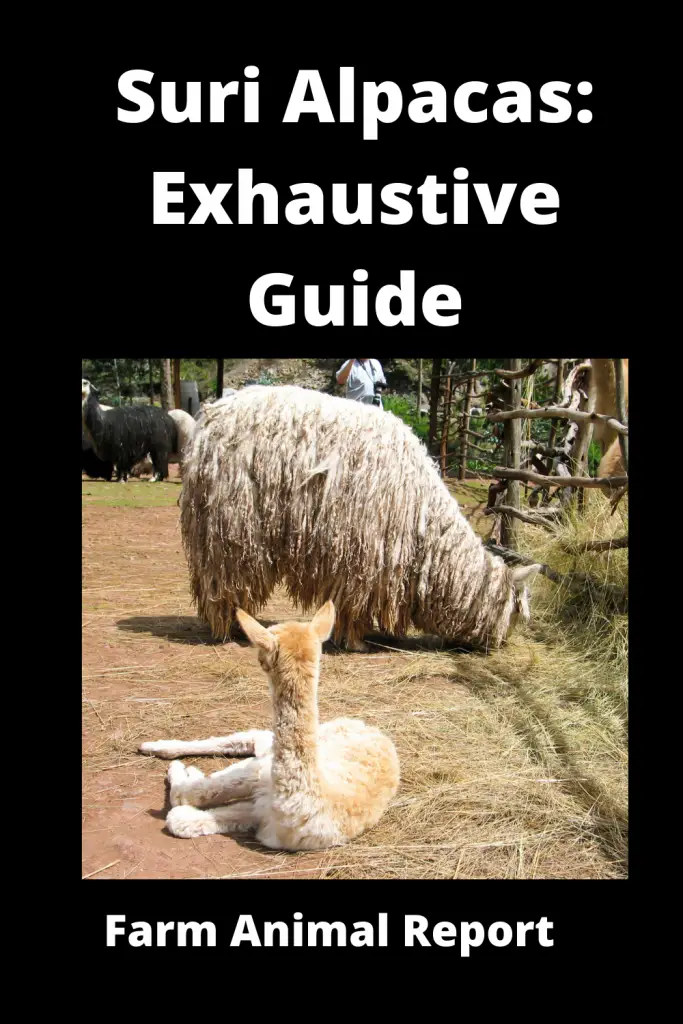
Does Alpaca Itch?
While regular alpaca wool is generally itch-free, some individuals may experience a mild itch. Regular alpaca is perceived as scratchy wool by those with sensitive skin. Everyone should be itch-free when wearing royal or baby alpaca.
While softness is subjective, there are some guidelines for determining the prickle factor of alpaca wool: the wool’s quality on the one hand and your skin’s sensitivity on the other. Not all alpaca wool is itch-free, as this varies according to the fiber’s thickness. In general, the “prickle factor” of wool (a measure of itchy vs. itch-free wool) is proportional to the micron count of the wool. Microns are used to describe the thickness of wool fibers (its diameter measured in one-thousandth of a millimeter).
Whether wool is itchy or not is determined by the fiber’s quality. Its thickness determines wool’s quality, and in general, thicker wool causes more itching.
The good news is that premium Suri alpaca wool is itchy-free. If you experience itching, it is possible that you have susceptible skin or that the alpaca clothing you purchased was made with low-quality fibers. One reason for the absence of itching is that Suri alpaca wool contains no wax or lanolin. Due to the possibility of allergic reactions to this type of natural ingredient found in other wools, individuals with allergies or sensitive skin should switch from regular wool to alpaca-type wool to protect themselves.
Is Suri Alpaca Itchy?
To be clear, the typical allergic reactions that many people experience when wearing wool are not always due to actual allergies. They are caused by the coarse texture of the fibers and may manifest as hives, splotches, redness, and itchiness. The reason for those symptoms to manifest on your skin is not so much that you are allergic to wool as it is that the sweater, gloves, or hats contain an excessive amount of coarse fibers.
Can you be Allergic to Alpaca?
Before determining the nature and prevalence of alpaca allergies, it is necessary to understand what the science says about wool allergies in general. According to the International Wool Society, over 30% of Americans have experienced an allergic reaction to wool. True wool allergies, on the other hand, may be quite rare. If a person is truly allergic to wool, she will sneeze, have itchy eyes, a runny nose, and have difficulty breathing, just as she would if she were allergic to cats.
According to Mike Safley, writing for Northwest Alpaca, the perceived allergic reactions to wool—including hives, splotches, redness, and itching—are manifestations of sensitive skin reacting to the coarse fibers of wool. The coarse fibers are referred to as medullated fibers; they are the guard hairs and primary fibers in the wool of an alpaca or other animal. The medullary cells have contracted, leaving coarse, hollowed-out stalks behind. The more medullation a fleece has, the itchier it is against the skin and thus less desirable for garment use.
Microns and the “Prickle Factor”
Microns are used to describe the diameter of the fibers in an animal’s wool. The more microns in the fiber, the coarser it is and the greater its prickle factor. For the 30% of Americans who report having a wool allergy, there is a good chance that their skin is susceptible to prickle or the way the skin’s neuron transmitters react to the wool fibers. Regardless of the type of wool used, if a garment contains any fiber larger than thirty microns in diameter, the prickle factor is activated.
What about Alpaca Fibers?
As previously stated, alpaca fiber is hypoallergenic due to its absence of lanolin—a fatty, waxy substance produced by sheep, goats, and other wool-producing animals. Additionally, it earns this designation because most alpaca garments are made from the wool of young or baby alpacas; the fibers that make up the yarn frequently fall below the diameter of twenty-two microns, the diameter at which the itch factor becomes an issue.
Still Itchy?
Many consumers who dislike conventional wool find that alpaca wool garments are more comfortable. If, however, alpaca garments continue to prickle, make an effort to purchase items made from fibers less than twenty-two microns in diameter; purchase knitted, rather than woven, garments; and avoid wearing these garments in sweat-producing environments, which can exacerbate the skin’s sensitivity. With any substance, an individual may develop a true allergy. True alpaca allergies are highly uncommon.
Is Alpaca Soft?
There are numerous advantages to wearing alpaca wool rather than other types of wool, including cashmere. This type is exceptionally soft, comparable to cashmere, but without the magnificent price tag. Additionally, this material is hypoallergenic and nearly waterproof. Combine these characteristics with the luxurious feel that this type of wool possesses, and you’ve got a great sweater that makes you look good. Consider that you have twenty different natural colors at your disposal to complement your fashion style and figure.
The variety of colors makes this material very appealing to purchase, as you will not lose any of the material’s soft or luxurious feel when changing the color. The only factor affecting this fabric’s soft and sophisticated feel is if it was woven in a low-quality manner with low-quality fibers.
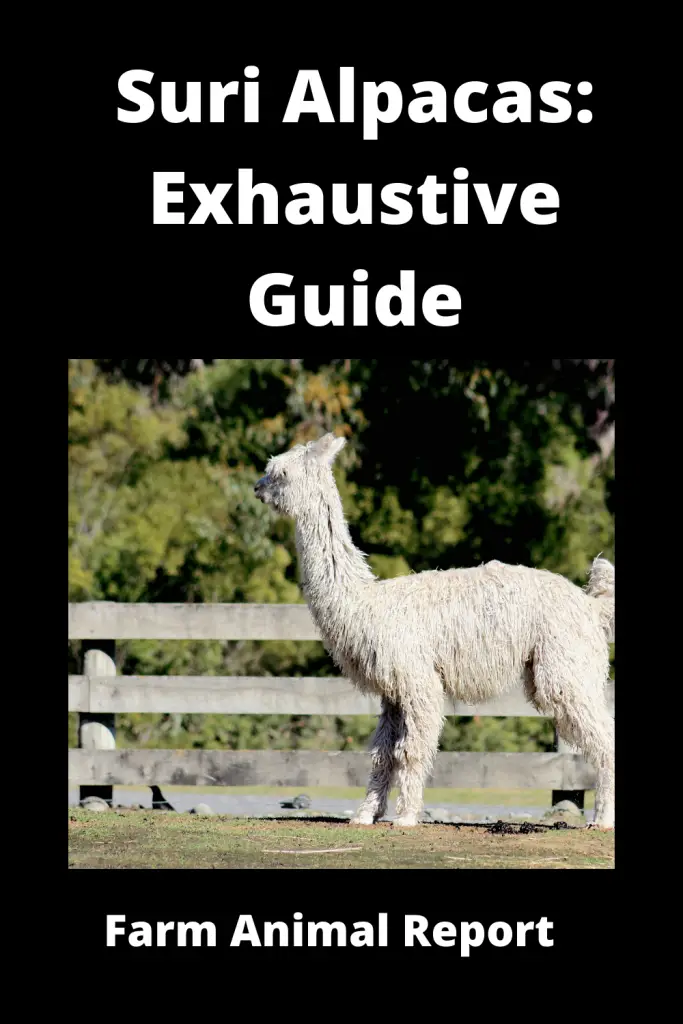
You may develop an aversion to alpaca wool when this occurs and wonder why you chose it over merino or cashmere wool clothing. One negative experience should not be the deciding factor when purchasing high-end clothing or anything else.
Learn More – 18 Ways to make Money Alpaca Farming
Final Thoughts
Suri produces a unique and beautiful fiber that is not found in any other animal. Suri’s most well-known characteristic is its exceptional natural luster, but it also has a lovely feel. Suri and Huacaya are identical in every other way.
Suri produces a unique and beautiful fiber that is not found in any other animal. Suri’s most well-known characteristic is its exceptional natural luster, which enables it to achieve effects in the finished product that would require chemical treatment on other fibers.
Although less visible to the naked eye, the structure of the Suri fiber shaft is highly smooth with minor scale relief than most fibers, which translates directly into the fiber’s exquisite silky handle. While these characteristics and their uniqueness add tremendous value to Suri fiber, they also mean that little is known about the best way to process it, and there is frequently a reluctance to experiment with Suri due to its novelty.


